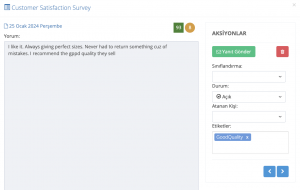Understanding customer sentiments and opinions is a cornerstone of successful business strategies. In today’s digital age, companies amass an abundance of customer feedback, with open-ended comments becoming increasingly prevalent. However, interpreting and deriving actionable insights from these comments remain a perplexing challenge for most businesses, despite the integration of artificial intelligence (AI) into their analytical arsenal.
The Conundrum of Open-Ended Feedback
Open-ended feedback offers invaluable qualitative data, providing nuanced insights into customer experiences, preferences, and pain points. Yet, grappling with the sheer volume and diversity of these comments presents a significant hurdle. The complexity lies not only in the variability of language and context but also in the subjective nature of human expression, which AI often finds challenging to decipher accurately.
The AI Convergence
AI, touted as the panacea for data analysis, has been deployed extensively to sift through vast amounts of customer feedback. Natural Language Processing (NLP) algorithms, sentiment analysis, and text categorization models have been harnessed to automate the process. While these tools show promise in handling structured data, the unstructured nature of open-ended comments proves to be a tougher nut to crack.
The Challenges Persist
Several persistent challenges hinder the efficacy of AI in analyzing open-ended feedback:
Contextual Understanding: AI struggles with contextual nuances, sarcasm, idiomatic expressions, and cultural variations, leading to misinterpretations.
Ambiguity and Subjectivity: Human language is inherently ambiguous and subjective, making it difficult for AI to accurately gauge sentiment and intent.
Lack of Domain Specificity: Many off-the-shelf AI solutions lack domain specificity, failing to grasp industry-specific jargon or nuances crucial for accurate analysis.
The Human Touch in AI Integration
While AI is a powerful tool, it cannot replace the human touch in deciphering intricate nuances embedded in open-ended feedback. Companies need to adopt a hybrid approach that amalgamates the strengths of AI-driven analytics with human expertise. Human analysts bring contextual understanding, emotional intelligence, and domain knowledge to the table, complementing the capabilities of AI algorithms.
Moving Towards a Synergistic Solution
To bridge the gap between AI capabilities and the complexity of open-ended feedback, companies can consider the following steps:
Fine-Tuning AI Algorithms: Continuously refining AI models with domain-specific data and context can enhance accuracy in interpreting open-ended comments.
Human-AI Collaboration: Encouraging collaboration between AI algorithms and human analysts fosters a more nuanced and accurate analysis of customer feedback.
Customization and Iteration: Tailoring AI solutions to the specific needs and intricacies of the industry or company can significantly improve analysis outcomes.
In conclusion, while AI offers tremendous potential in analyzing open-ended customer comments, its efficacy remains constrained by the inherent complexity of human language. A harmonious integration of AI-driven automation and human intelligence is pivotal in unraveling the depths of customer feedback, empowering businesses to derive actionable insights and drive meaningful improvements in their products and services.
Understanding and acting upon open-ended feedback is a continuous journey that necessitates a balanced blend of technological advancement and human intuition.
Meet Wiseback
Would you like to review your business’s end-to-end customer experience processes, utilize technology effectively, and propel the customer experience you offer into the future? For more information about Wiseback solutions, feel free to contact us.

